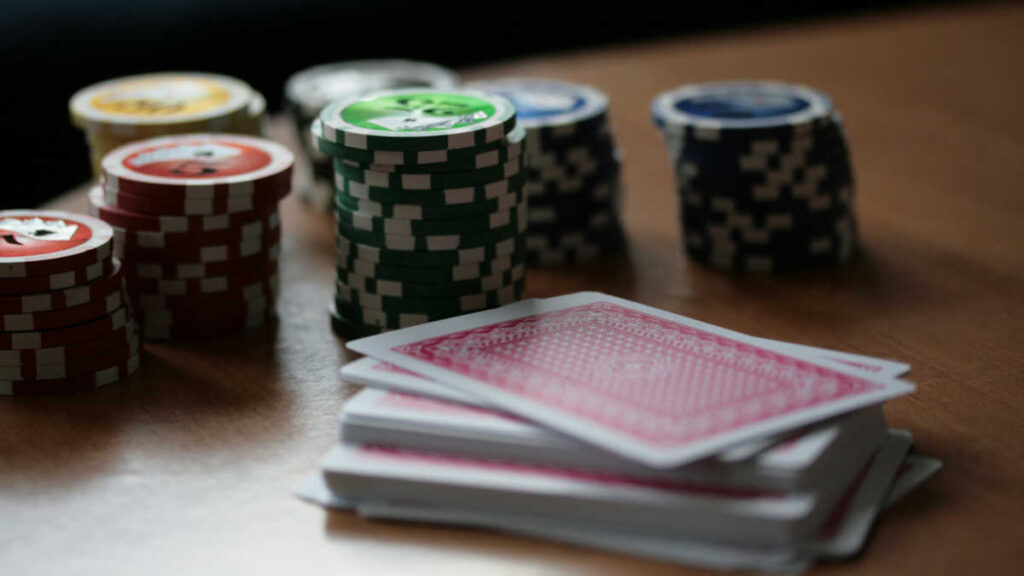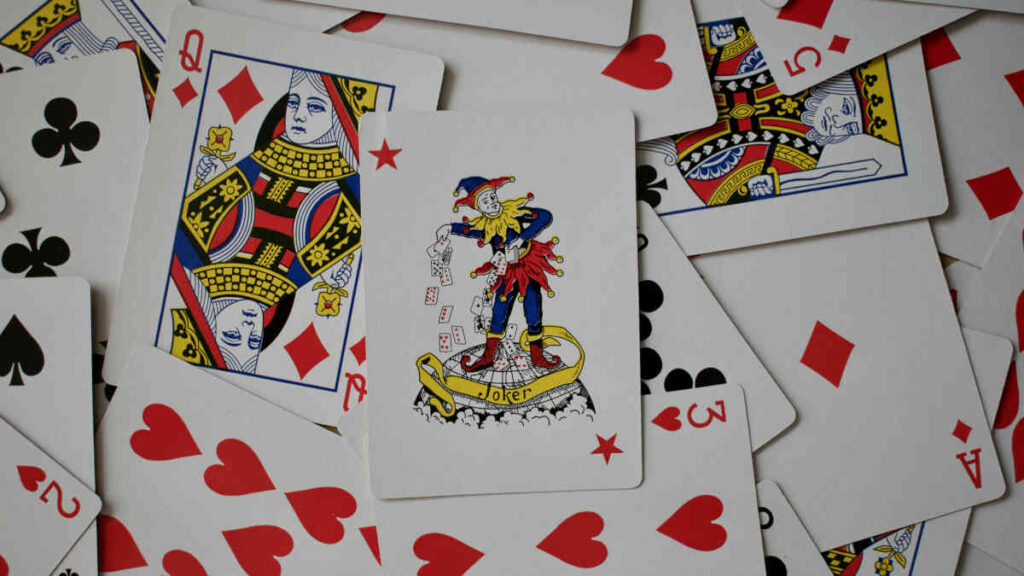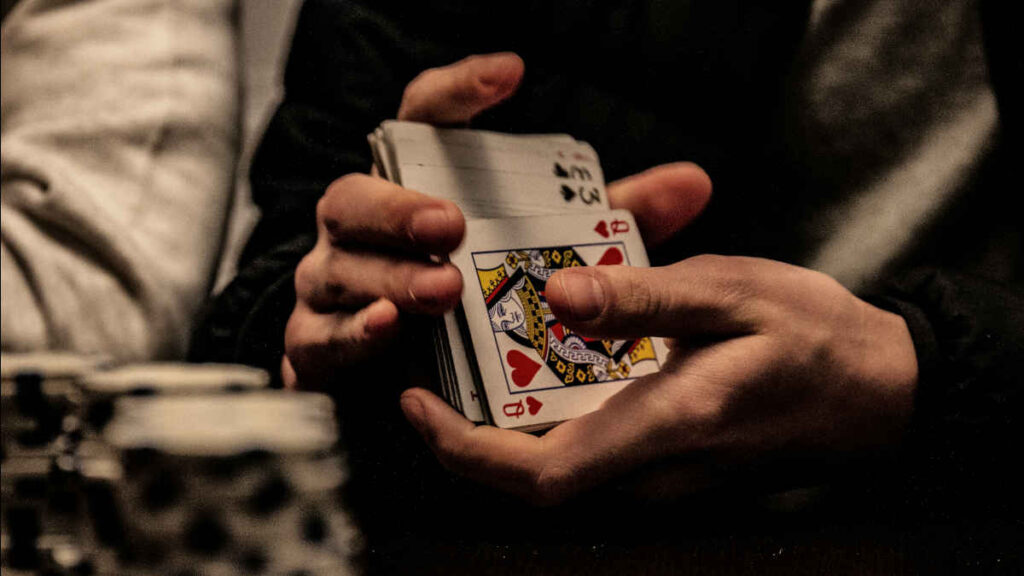If you have ever played poker or any other card game, you have used a standard deck of cards to do so. But, there is probably a lot you don’t know about the card deck that you should if you are serious about card games.
From the very origins and history of playing cards, to the composition of a card deck and the way cards work in poker, this page will examine everything you need to know.
Let’s start with some basics and explore where playing cards came from and who used them first to play card games similar to those we play today.
History of the Playing Cards
The history of playing cards is a long one, with nations around the world inventing various types of cards over the centuries and adapting them to their culture.
The first deck of playing cards, similar to the ones we use today, was in use during the Tang Dynasty in China, around the 9th century AD.
From China, cards and games played with them made their way to the Egyptian Memeluke Empire, where it underwent adaptations to the local culture.
As cards arrived in new territories, they changed their shapes, colors, and the concepts drawn on them to reflect local customs and traditions.
The Memeluke card deck was split into four suits, which represented gold coins, swords, goblets, and polo sticks, as polo was the most popular sport in the land.
By the 14th century, playing cards were part of the European lifestyle, and the early decks were reserved for the aristocracy. They were hand-painted, luxurious items, which only the wealthy could own. In each country, the designs reflected local customs and traditions.
It is in this era that the modern card deck was developed, with the four suits we know today. As printing presses were invented, the production of playing cards became easier, and card decks started being sold at reasonable prices to the greater European population.
By the 18th century, the French card deck became a global standard and was eventually adopted by the first casinos and saloons, which were the predecessors of modern-day gambling establishments.
Card Deck Broken Down: Suits, Rankings, and More

A standard deck of playing cards used for poker contains 52 cards. Up to four additional cards are often found in card decks. These cards are jokers; they are not used in poker but are essential in many other card games.
Whether you play on the website with Curacao Online Casinos or poker sites, the card deck always stays the same.
The 52 cards used in poker can be divided into four suits (two black and two red) and 13 ranks. The suits in a traditional card deck are as follows:
- Spades (♠)
- Hearts (♥)
- Clubs (♣)
- Diamonds (♦)
There are a total of 13 rankings. The first ten are represented by pips on the cards, with values ranging from 1 to 10. Each card has the corresponding number of pips illustrated on it, along with a number. The Ace card has one pip and the letter A instead of the number 1.
The three remaining card rankings fall off to the court cards. These are the Jacks, Queens, and Kings, whose designs trace back to the royal courts of Europe in the Middle Ages.
These cards are some of the highest-valued cards in most card games, including poker, where only the Ace cards have a higher value than a King.
The final card ranking is the Joker, which was invented in America and first introduced in the 19th century for the game of Euchre. Since then, Joker has made its way into many card games, but not poker.
While the 52-card deck is the global norm these days, other deck sizes are still in use. These are typically reserved for playing specific card games, and they often feature different suits and designs . For example:
- 32-card deck for the game of Piquet
- 36-card deck with bells and acorns
- 40-card deck with suits and cups
Card Deck in Poker
The game of poker is traditionally played with a 52-card deck. Popular variants like Texas Hold’em, Omaha, Seven Card Stud, and Five Card Draw, as well as their variations, all employ the traditional card deck.
This is no accident either, as the game was developed during the 19th century in the USA. By that time, Americans were mostly using a 52-card deck to play card games, and they found inspiration for poker in various European games that included betting and bluffing.
A 52-card deck allows for millions of possible five-card combinations to be made. In games playd with just five cards, a maximum of 2,589,960 combinations can be made. However, in games like Texas Hold’em or Seven Card Stud, that number goes up exponentially.
Most poker games also use traditional card rankings, with Twos (called Deuces in poker) being the lowest ranked, and the Aces being the highest ranked cards.
Poker games call on players to make five-card combinations of cards, ranging from “high card” to a “royal flush” in accordance with the poker hand rankings.
Suit Values in Poker
Card suits have a great value in some card games, and less value in others. Poker falls into the latter category, as there is little value in holding cards of a particular suit.
While hand combinations that involve suits, such as flushes, and straight flushes, are very powerful, it doesn’t quite matter which suit your cards are in.
In fact, there is only a handful of scenarios where card suits are compared, and these are mostly situations of low value such as:
- When picking the dealer for the first hand
- When assigning the bring-in in Stud games
- To award the odd chip in split pots
While these situations are not very common in poker, and they don’t matter much, the suits are ranked as follows in them: Spades, Hearts, Diamonds, Clubs.
Card Deck in Short Deck and Lowball Poker Games
We previously said that poker is played with a 52-card deck, but this isn’t always the case. A few poker variants use what’s known as a “short deck,” and this version was particularly popularized in recent years with the invention of Short Deck Hold’em.
In such games, the same deck of cards is used, but all Deuces, Treys, Fours, and Fives are eliminated from the deck. This leaves only 36 of the original 52 cards in play.
The elimination of all low cards creates different dynamics, makes starting hands closer in value, and also forces certain rule changes. For example, a flush is worth more than a full house in Short Deck Hold’em, as it is harder to make.
Another major difference in some poker games, such as Razz and 2-7 Single Draw, is that the value of cards may be reversed.
These games are known as “lowball” poker games. In such games, players seek to make hands with the lowest possible cards, making the Deuces the most powerful cards, while Aces lose almost all of their value.
Card Decks Around the World

While the 52-card French card deck is by far the most popular in the world today, there are some other versions that are common in some parts of the world.
Some of these include:
- French Deck: Typical 52-card deck with 13 ranks of cards in Spades, Hearts, Diamonds, and Clubs.
- German Deck: Usually has 36 or 32 cards, split into suits like Acorns, Leaves, Hearts, and Bells.
- Swiss Deck: Similar to the German deck and usually has 36 cards. The suits are Acorns, Shields, Roses, and Bells.
- Spanish Deck: Usually made up of 40 cards with suits like Coins, Cups, Swords, and Clubs, with origins in Spanish royal history.
- Italian Deck: Another 40-card deck used for games like Scopa and Briscola. Suits include Swords, Cups, Coins, and Clubs.
- Japanese Deck (Hanafuda): This 48-card deck is split into 12 ranking, with each suit representing a month of the year and a flower. These cards date back to the Edo period and are typically beautifully illustrated.
- Indian Deck (Ganjifa): Ganjifa cards come in all shapes and forms. Decks range from 24 to 120 cards, and suits can include Charka, Swords, Cups, Coins, and more. The cards are often hand-painted and home-made.
Other Types of Card Decks
Playing cards have made their way into many aspects of our lives, and can be found in art, mysticism, and modern culture.
The Tarot deck, dating back to the 15th century Italy, is a great example of a card deck that started as a card game but evolved into much more.
Tarot decks are made up of 78 cards, divided into 22 Major and 56 Minor Arcana. These cards depic symbols like The Lovers, and Death, and are often used as fortune-telling tools.
Modern spirituality has given birth to a series of Oracle decks and affirmation card decks, which are used in various rituals and customs around the world.
In pop culture, card decks are used to play games like Uno, Magic: The Gathering, and Pokemon, none of which are traditionally associated with the world of gambling.
The diversity of card decks available today demonstrates the importance that cards play in our history, culture, and daily lives in many parts of the world.


